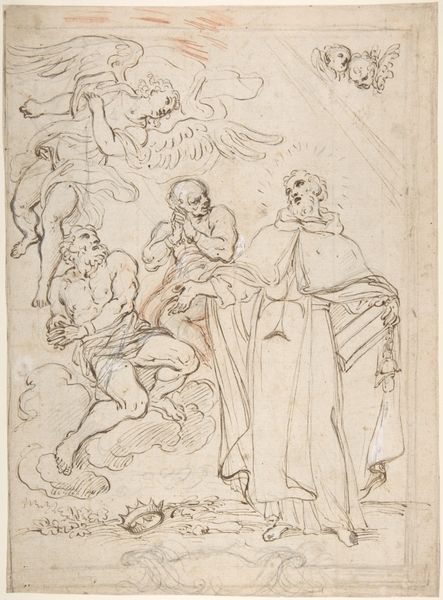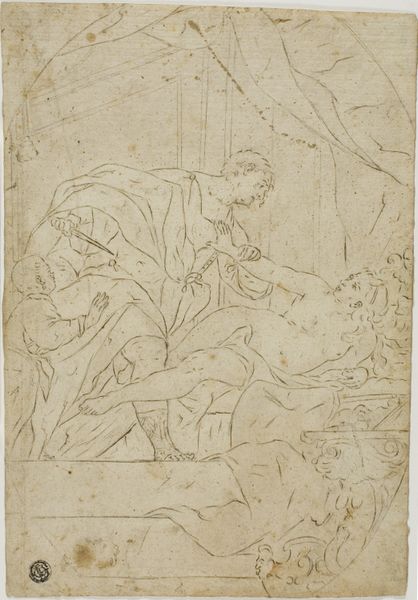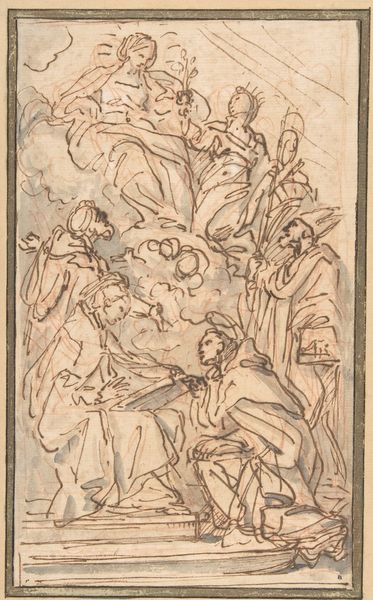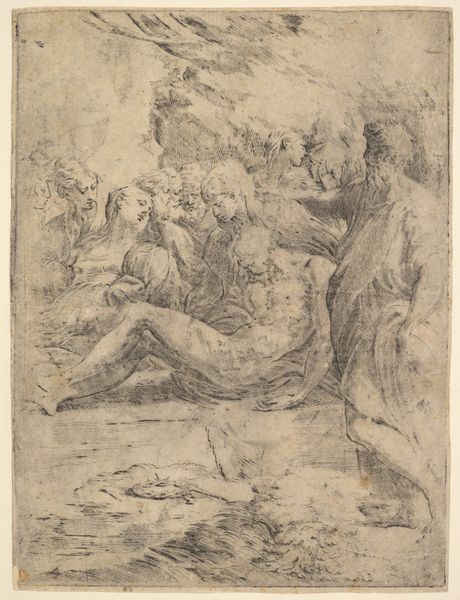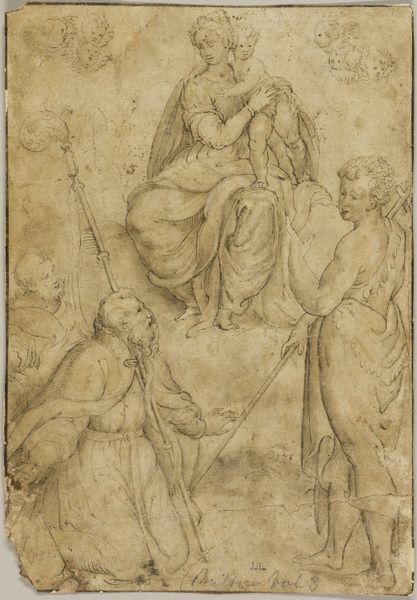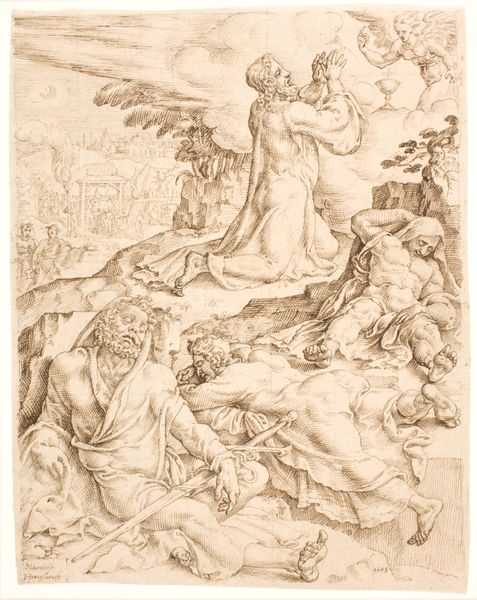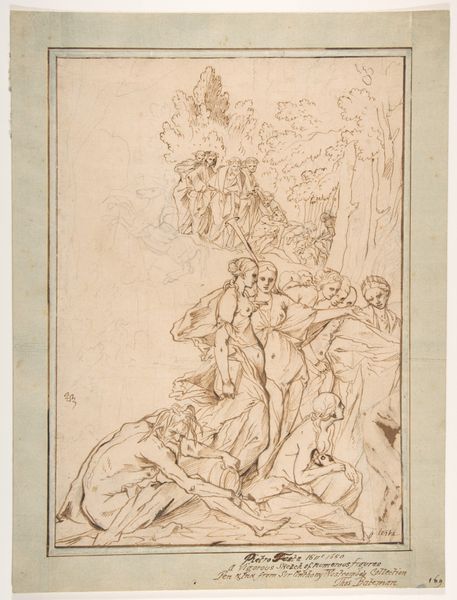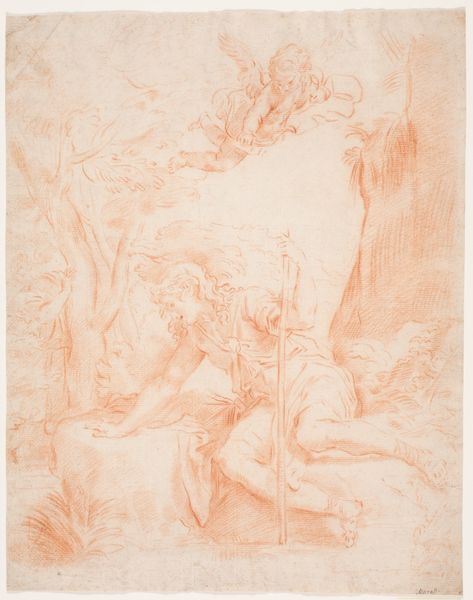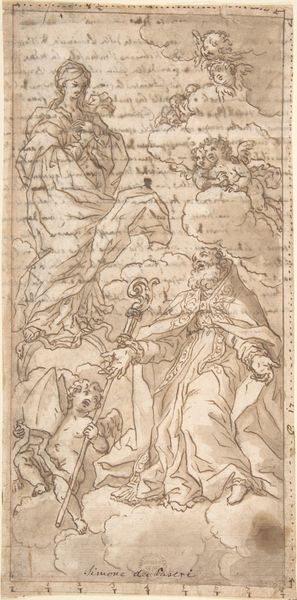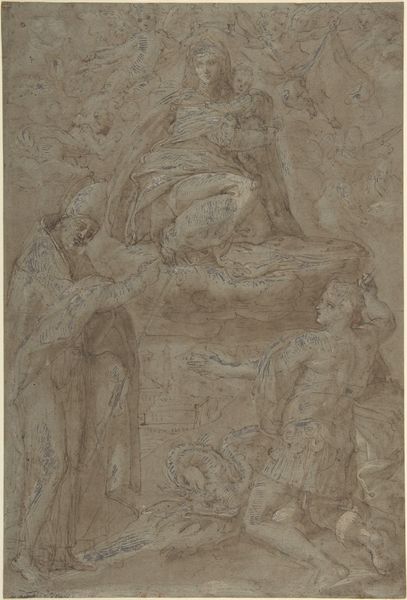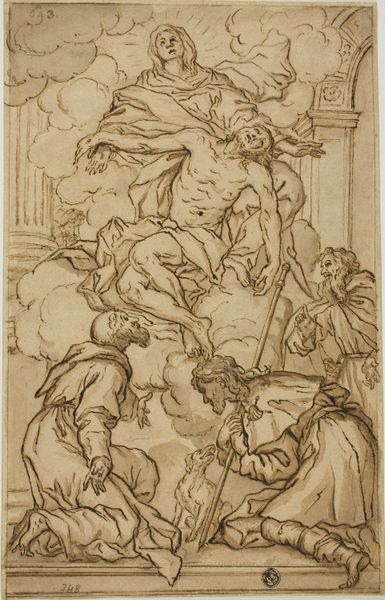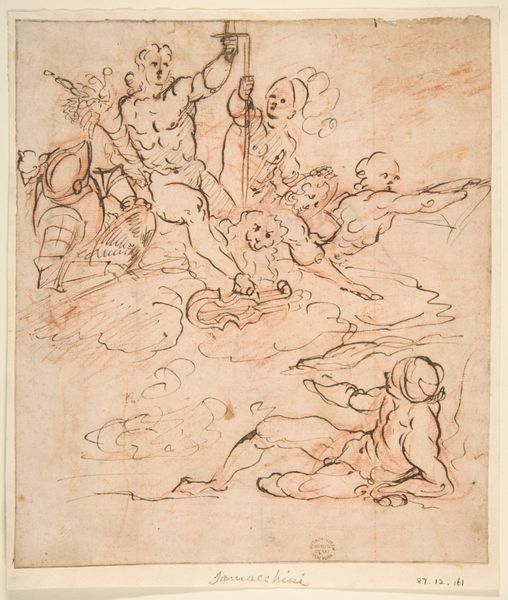
drawing, print, ink
#
drawing
# print
#
landscape
#
figuration
#
11_renaissance
#
ink
#
history-painting
#
italian-renaissance
Dimensions: 9-7/8 x 8-5/8 in. (25.1 x 21.9 cm)
Copyright: Public Domain
Editor: This ink drawing, titled "The Agony in the Garden," was created sometime between 1500 and 1600 by an anonymous artist. It depicts figures in a landscape and it's filled with such palpable tension, what stands out to you most? Curator: The symbolic weight carried within this image speaks volumes, even across centuries. Look closely: we see Christ atop a small mountain, haloed in divine light, gesturing towards a celestial vision. Editor: That celestial scene feels somewhat separated, set apart from the rest of the work. Curator: Exactly! Notice the angel offering the chalice – a powerful premonition of sacrifice. But beneath him, observe the sleeping apostles. This arrangement establishes a clear visual hierarchy, drawing upon established traditions for conveying sacred narratives. The sleeping apostles, oblivious to Christ’s torment, highlight human frailty against divine purpose. Editor: The town in the far background is quite small and simplified. Why do you think that is? Curator: The artist seems to be drawing a sharp contrast: foregrounding Christ's internal, psychological struggle over earthly, worldly concerns. The buildings are but a distant concern for the praying Jesus. Is there anything about the style of line that jumps out? Editor: It feels almost like the artist used different hands to create different regions within the drawing. Curator: Indeed, it almost feels fragmented. Now think about the title: "Agony". Perhaps the varied line weights reflect the chaotic interior landscape of Christ in prayer, a sort of visual fracturing mirroring the emotional fracturing that He is undergoing. Editor: I never would have considered how line quality can enhance narrative expression like that! It's a reminder of the deeply thoughtful connections artists forge between symbolism and form. Curator: Indeed! The echoes of cultural memory, visually manifested, invite us to connect our contemporary selves with enduring human themes of sacrifice, devotion, and struggle.
Comments
No comments
Be the first to comment and join the conversation on the ultimate creative platform.

